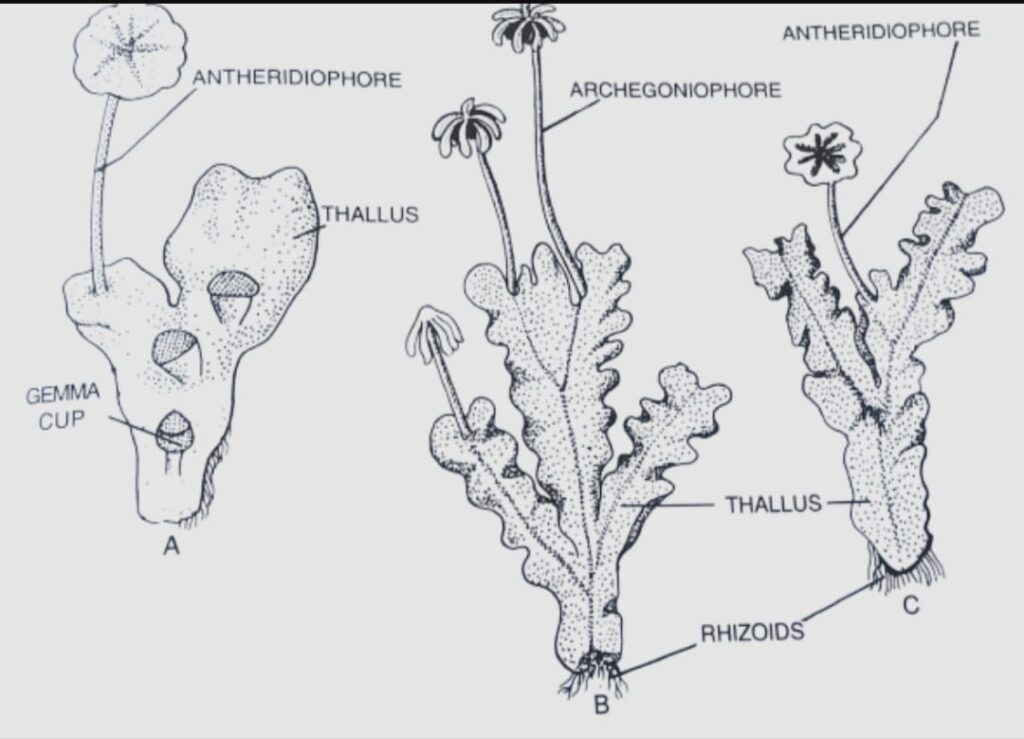Thallus organization, morphology, anatomy and reproduction
Thallus organization (External morphology):

B- Male thallus with antheridiophore, C- Female thallus with archegoniophore
The thallus is deep green and provided with a midrib. Midrib is median, more or less conspicuous and is marked on the dorsal surface by a shallow groove and on the ventral surface by a low ridge. When observed by magnifying glass, the dorsal surface of the thallus appears to be divided into small polygonal or rhomboidal areas; these areas indicate the outline of air chambers of the thallus located just beneath the upper epidermis. Each such area has got a prominent dot-like spot in the centre which indicates the position of an air pore. On the dorsal surface, along midrib, there are cup-like or crescent-shaped structures with frilled margins known as gemma cups. Each gemma cup contains one or more vegetative reproductive bodies called gemma or gemmae (plural). Mature thallus bears at the growing apices of certain branches sex organs which are borns on species erect branches of two kinds- i) male sex organs, called as antheridia borne at the tips of antheridiophore and ii)Female sex organs, called as archegonium borne on archegoniophore. From the ventral surface of the thallus, scales and rhizoids of two different kinds- a) smooth walled and b) pegged are developed. These rhizoids serve as anchoring and absorbing organs. Scales are multicellular and one-celled thick, these are present on both sides of the midrib in 3-4 rows.
Internal morphology: